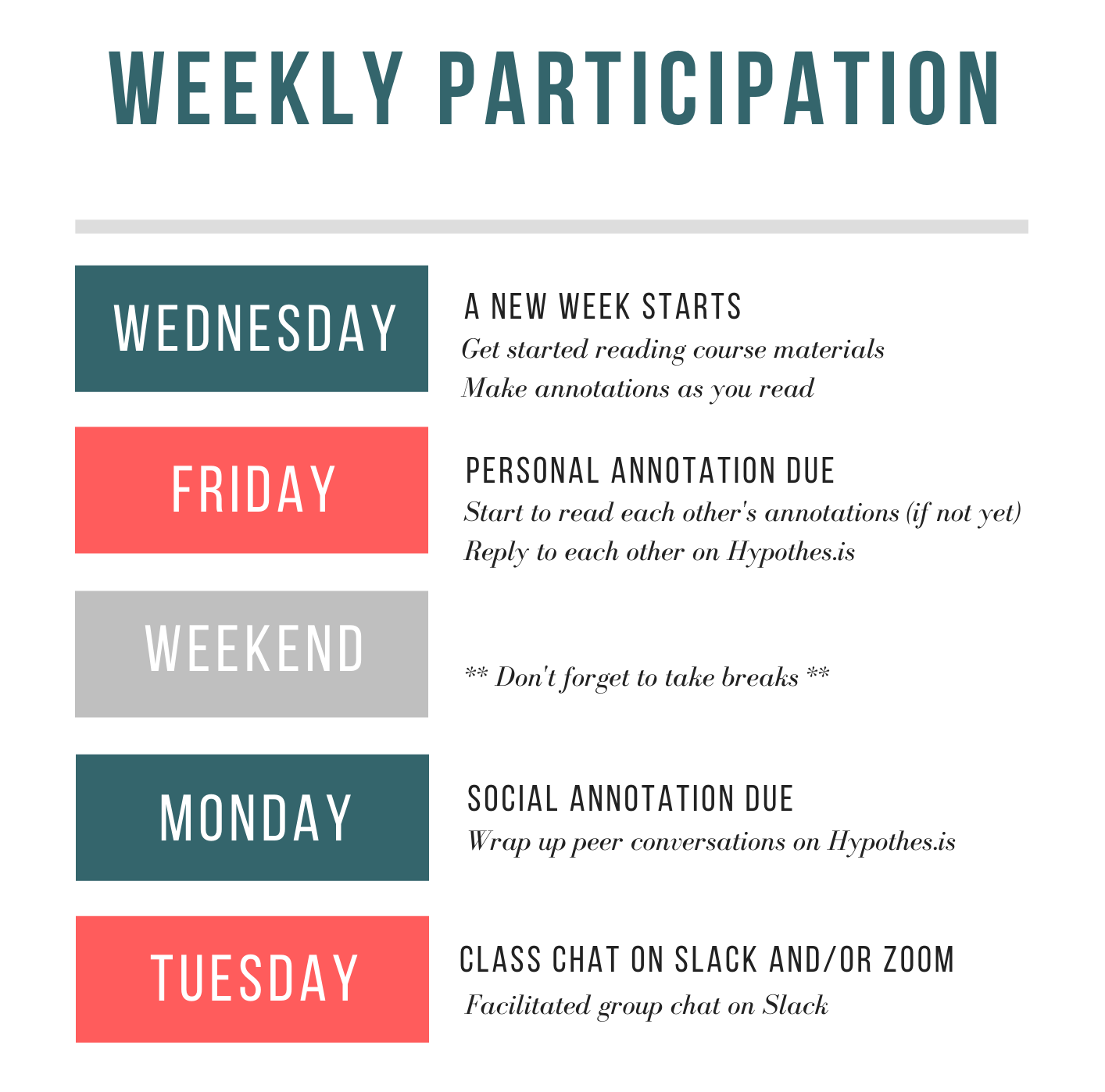Week 1 Introduction
A warm welcome to CI 5371 - Learning Analytics: Theory and Practice! I am so excited to offer this course again this fall at the University of Minnesota. As the instructor, I learn so much from the class community each year and look forward to our adventure together this semester!
This week we will:
- Get familiar with the course, including its design, schedule, and tools
- Get to know each other
- Discuss our diverse interests in learning analytics
1.1 This Course
1.1.1 Course Syllabus
First thing first, please read the course syllabus in its entirety.
Leave a comment or send me an email when you have any questions.
1.1.2 Technology setup
An online course does not need to be about watching videos and answering quizzes. To foster rich learning experiences, we will be using several technological tools to foster social, collaborative learning. Depending on your familiarity with these tools, there could be a learning curve. So please spend time this week to familiarize yourself with them.
Pro tip: Please use you UMN id (chenbd for myself) consistently when signing up for these tools.
Zoom. We will host a number of virtual meetings on Zoom throughout the semester. Please make sure your computer has Zoom installed (see the video below). Please test your Zoom setup in advance to make sure audio and video configurations work properly.
Slack. You will receive a link that invites you to join our Slack community. Course announcements are made on Slack. All sorts of class discussions will take place there as well. You can also interact with our course alumni in some public channels. Slack is a better tool for social interaction and community building.
First time using Slack? Watch the video below and/or read this brief introduction to Slack.
Hypothes.is. You should have received a link that invites you to join our Hypothes.is group. Hypothes.is is a web annotation tool that enables us to discuss readings in a contextual manner. When annotating, please make sure our group name (LAUMN-2020) is properly selected (see image below). See this quick start guide to get started, and this tutorial page to learn about annotating together as a group.
Again, please use your UMN id when creating your Slack and Hypothesi.is account.

If you have any feedback on the design, I’d love to hear your thoughts.
1.1.3 What to expect each week?
This online class is designed to offer rich opportunities for social participation. Below is an infographic showing how a week would (typically) look like.
- Our class meetings happen on Tuesdays. The class meetings are designed for us to chat about things we’ve learned, gaps of understanding, future plans, etc. In some weeks we will meet in Zoom; in some other weeks, we will “meet” on Slack throughout Tuesday.
- A fresh week starts on Wednesdays. Depending on your schedule, you can get started with course readings and begin to make annotations.
- By the end of Friday, you are expected to finish reading articles assigned for the week and post your personal annotations on Hypothesis.
- By the end of Monday, you are expected to check out what other colleagues annotated and reply to each other. You will receive an email notification when someone responds to you. It is hoped that by putting our minds together we can develop deeper understanding.
- On Tuesday, we chat more on Slack or Zoom. Detailed guidelines will be posted each week.

1.2 Week 1 Activities
1.2.1 Readings
- Course syllabus
1.2.2 Week 1 Zoom Meeting
Our first virtual meeting will take place on Tuesday, 09/08, 5:30-7pm via Zoom. You should have received a calendar invitation with details.
See you soon!